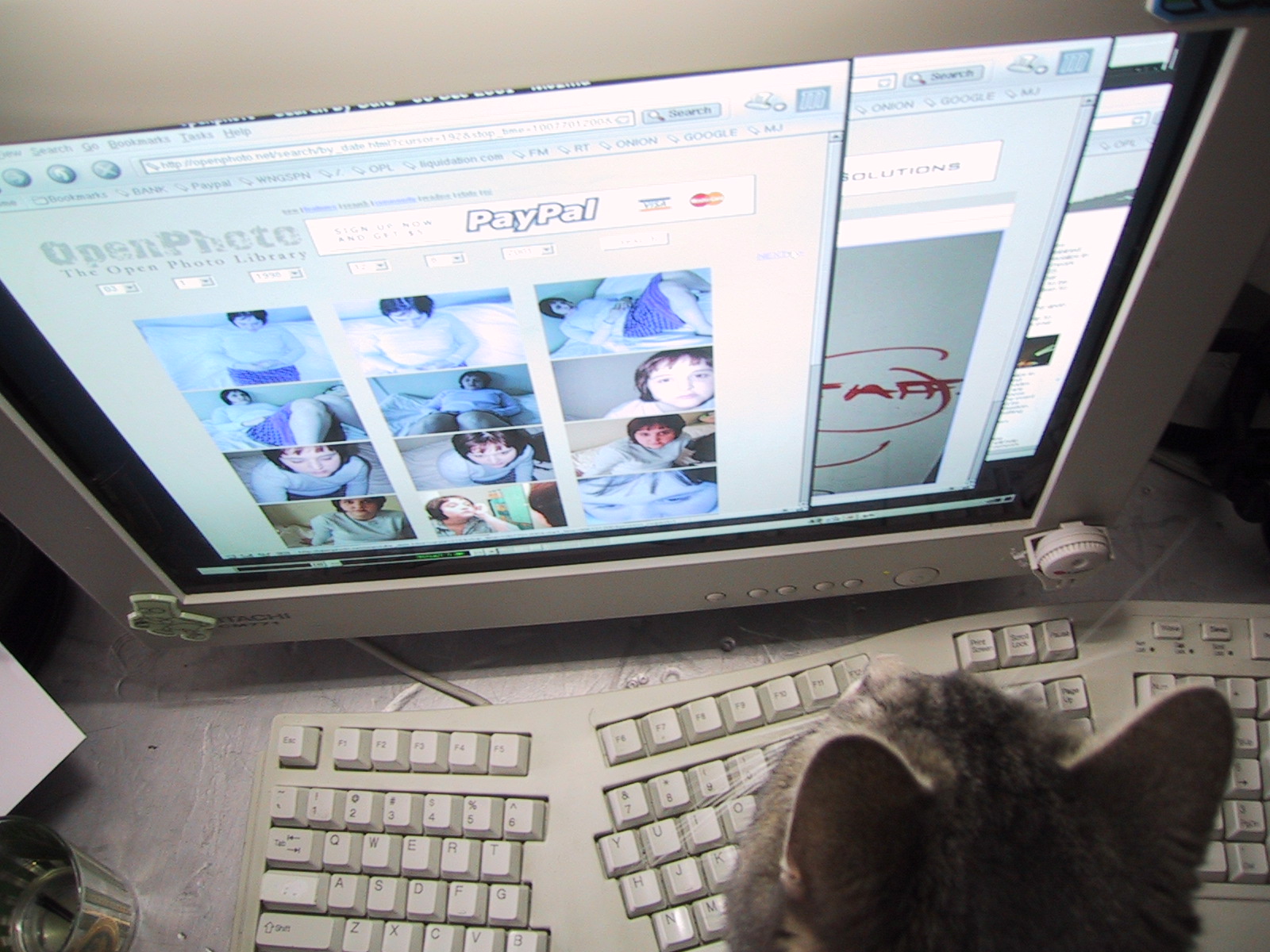early our children should be using the internet?
Thoughts Regarding Last Week's Discussions
Many of us expressed our distrust of the internet during Thursday's class discussion. Yes, there is much to be explored and learned from the internet, but we also understand that images and information are much too easy to manipulate. While we, as children of books, find the internet suspect, our students often have not developed the skill of reading with a critical eye. The below picture, for me, exemplifies the suspect nature of the internet and visual media in general. This photo has been disproven as valid by many sources, and yet it is still quite easy to not only find on the internet, but found on fairly "credible" sights.
in the background is supposed to be one of the
hijacked planes on 9/11. The man is assumed to be
a visitor to the WTC.
Although the above example disgusts me due to the emotions it plays on, I have to admit the ability to create such a believable image is pretty intriguing. While this example supports our natural inclinations to distrust multi-media (especially from the internet), these types of "hoaxes" are not new or restricted to new media.
Traditional written texts are just as susceptible to fooling the public with intentionally inaccurate information. Has anyone ever read Letter from a Nut? Hysterically true letters to corporations, but its author doesn't exist. Sure, this book is intended as entertainment. So how about mistruths delivered by the medical community? Several medical conferences have had presenters mention the "fact" that Jamie Lee Curtis is an hermaphrodite. Any proof for this? Nope--it's an urban legend.
The fact that information comes from print media or respectable sources does not excuse us from reading critically. So my point is this: One of our responsibilities as teachers is to provide students with the tools to think and read critically. That skill and the strategies used are no different for new media than they are for print text.


3 comments:
First of all--congrats!!! I hear you were not only accepted into a doctorate program in English at UCR but also with a huge scholarship!!! Wow!!! This is me being happy for you :-)
Second, I'll thank you for suggesting Andrea Lunsford in forming my argument regarding collaborative learning.
Finally, I'll comment on your post. I'm blown away that you responded to my class question on your blog. You have done a great service in reminding not only teachers but also parents that we have the great power, and with that comes great responsibility (Spiderman), in guiding kids how to, as you say, "think and read critically." Youngsters are certinaly not born with the instincts of making judgments about credible authors although my four year old is getting pretty good at recognizing when I am putting her on with verbal irony. I will no doubt be working closely with my daughters' and students' cognitive development.
Your post had me asking myself the question and :/>2, “Then what is real in media world?” But you quickly reined me in and offered a beautiful aid to this problem- teach our students how to think critically about what they are viewing. The difference between fiction and reality is probably the best tool we have against misleading images and text. Thank you.
Post a Comment